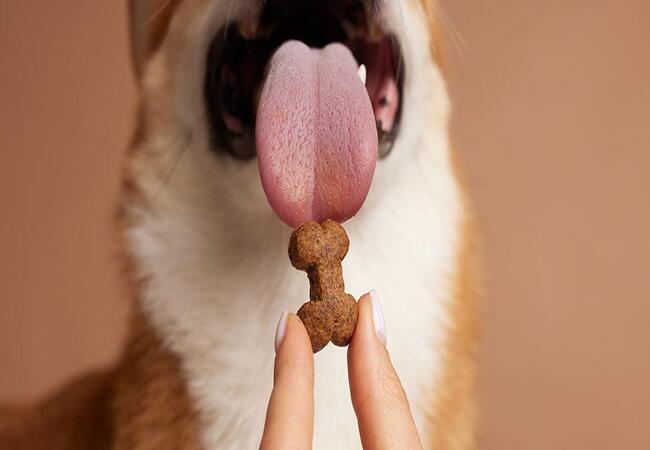Do Dogs Have Taste Buds? Vet-Approved 2025 Guide to Flavor 👅🐶

In this article
👅 Do Dogs Have Taste Buds? A 2025 Guide to Canine Flavor Perception 🐶
By Dr Duncan Houston BVSc
Ever wondered why your dog seems to enjoy certain foods while turning up their nose at others? 🐕 Understanding the canine sense of taste can provide insights into their dietary preferences and behaviors. Let's delve into the fascinating world of dog taste buds and how they experience flavors.
🔬 The Anatomy of Canine Taste
Dogs possess taste buds, though fewer than humans. While humans have approximately 9,000 taste buds, dogs have about 1,700. These taste buds are located on the papillae—small, visible bumps on the tongue. Puppies develop their ability to taste after a few weeks of life, even before their hearing and vision fully mature. As dogs age, the number of taste buds can decrease, potentially affecting their appetite and food preferences.
🍽️ What Flavors Can Dogs Detect?
Despite having fewer taste buds, dogs can detect the same primary flavors as humans:
- Sweet: Dogs have a preference for sweet flavors, which may be linked to their ancestral diet that included fruits and vegetables.
- Sour and Bitter: These taste receptors are located toward the back of the tongue. Dogs often avoid sour and bitter tastes, which can indicate spoilage or toxicity.
- Salty: While dogs can taste salt, they don't have a strong preference for it, likely due to their meat-rich ancestral diets that naturally provided sufficient sodium.
- Umami (Savory): Dogs have specific taste receptors fine-tuned to meats, fats, and meat-related chemicals, reflecting their carnivorous heritage.
💧 Unique Water Taste Buds
Interestingly, dogs have taste buds specifically sensitive to water. These are located at the tip of the tongue and become more active when the dog is thirsty or after eating salty or sugary foods. This adaptation encourages hydration and helps maintain fluid balance.
👃 The Role of Smell in Taste
A dog's sense of taste is closely linked to their sense of smell. With approximately 300 million olfactory receptors (compared to about 6 million in humans), dogs rely heavily on scent to enhance flavor perception. This is why they may show a strong preference for foods with potent aromas.
🧠 Taste Preferences and Behavior
Dogs' taste preferences can be influenced by various factors:
- Breed and Genetics: Some breeds may have specific taste inclinations based on their genetic makeup.
- Life Stage: Puppies and senior dogs may have different taste sensitivities and dietary needs.
- Health Conditions: Illnesses or medications can alter taste perception, affecting appetite.
🍖 Enhancing Your Dog's Mealtime Experience
To cater to your dog's taste preferences and ensure a satisfying mealtime:
- Offer Variety: Introduce different protein sources and textures to keep meals interesting.
- Warm the Food: Slightly warming food can enhance its aroma, making it more appealing.
- Maintain Freshness: Ensure food is stored properly to preserve flavor and prevent spoilage.
- Consult a Vet: If your dog shows signs of picky eating or appetite loss, seek veterinary advice.
📱 Leveraging Technology for Pet Health
Modern tools can assist in managing your dog's health effectively:
- Ask A Vet App: Access expert veterinary advice and schedule consultations conveniently.
- Woopf: Utilize training resources tailored to your dog's breed and behavior.
- Purrz: Monitor your dog's activity levels and set reminders for health check-ups and medication schedules.
🎯 Conclusion
Understanding your dog's sense of taste can help you make informed decisions about their diet and overall well-being. By considering their unique taste preferences and sensory experiences, you can enhance their mealtime satisfaction and support their health.
For personalized guidance and support, visit AskAVet.com and download the Ask A Vet app today! 🐾📲






